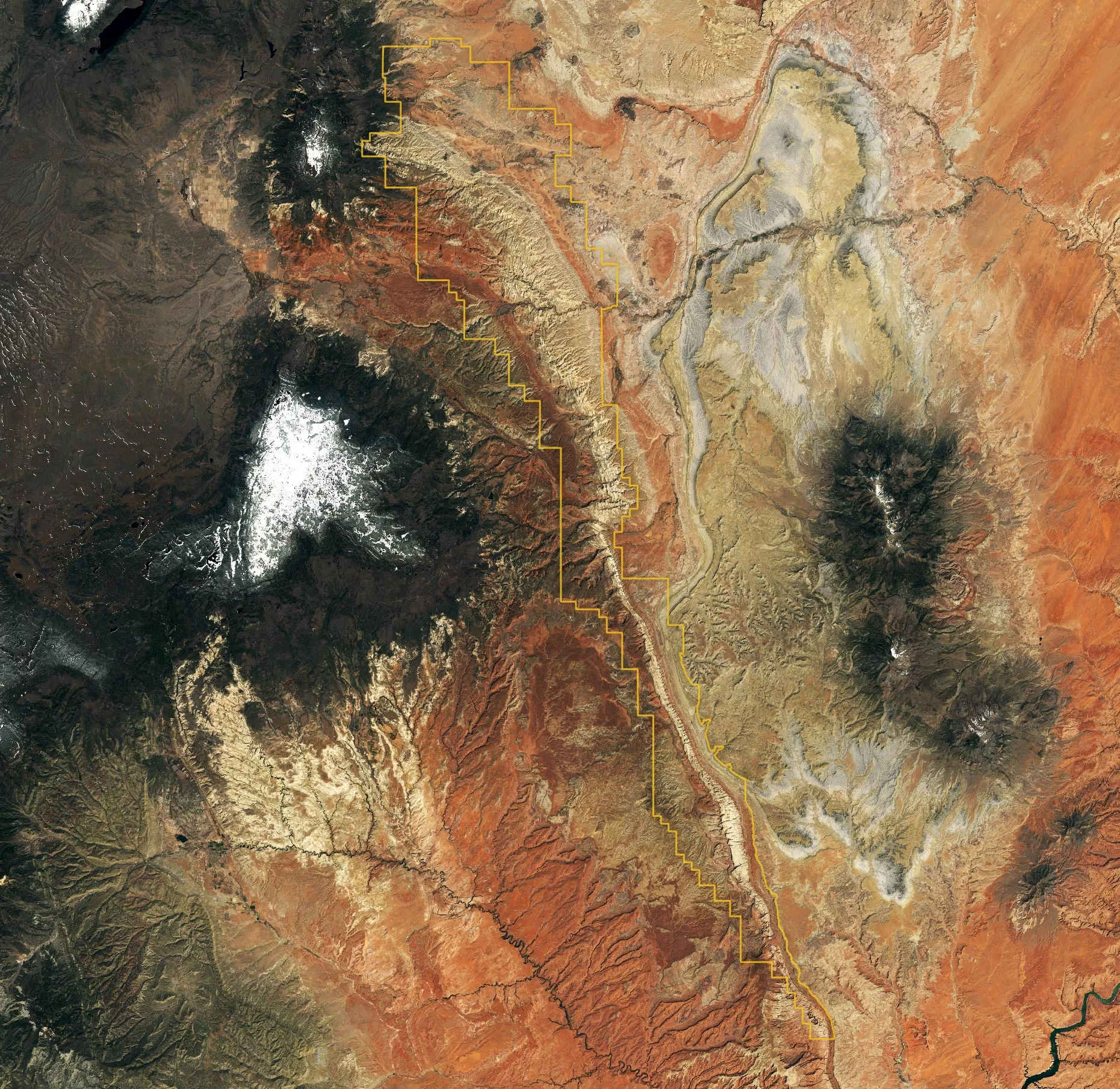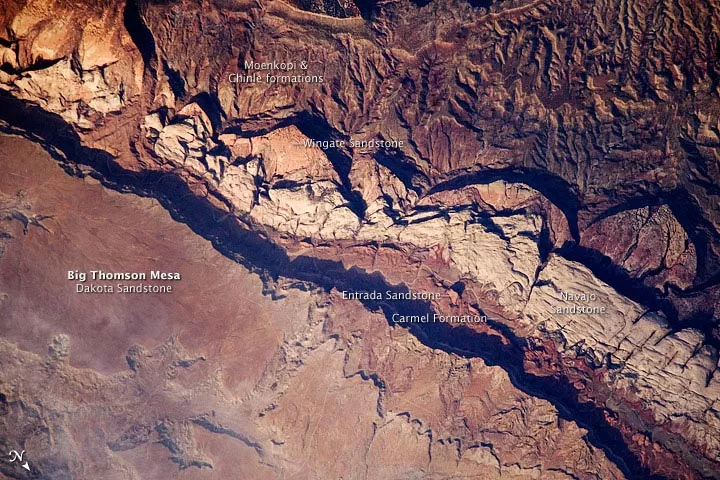Capitol Reef National Park in South Central Utah has neither Capitol nor reefs. It is named for two geological features: the white dome protruding from the Navajo Sandstone, which reminded early settlers of the Capitol in Washington, D.C; A terrifying rocky cliff ridge became a barrier to passage. The settlers compared it to the perils of maritime navigation of marine reefs.

This ridge, called waterpocket fold, extends 90 miles (140 kilometers) from north to south. It can be seen in the above picture, which was obtained by operational land imager-2 (oli-2) of Landsat 9 on May 2, 2022.
The ridge is named for a common feature in the park. Water bags are natural depressions or pockets -- eroded from rocks. They collect rainwater and melt snow and are a valuable source of fresh water for people and wildlife in the desert. Geologically, the water bag fold is a single-layer structure, that is, the rock layer folds up or down on one side.
Between 75million and 35million years ago, the tectonic forces that lifted the Rocky Mountains bent the old rocks under the Capitol Reef National Park. The upper rock layer is not broken but bent, which forms a water bag fold. Recently, rain, mountain torrents and freeze-thaw cycles have eroded and carved cliffs, canyons, bridges and domes to form what people see now.
Capitol Reef National Park tells a geological story of sedimentation, uplift and erosion for hundreds of millions of years, which is also mixed with volcanic activity and glacier movement. The park has almost complete rock strata series, from the Late Permian (about 290million years ago) to the late Mesozoic (66million years ago). These rocks were deposited along the shallow sea and ancient Delta, almost continuously recording the life and environment here from the rise of dinosaurs to the extinction of dinosaurs.
A few of them can be seen in the following picture of the great Thomson mountain in Capitol Reef National Park. This photo was taken by the staff of the international space station on june14,2009.

Capitol Reef National Park also has part of the largest and oldest fossil site in North America. These fossils are mainly trace fossils or ichnofossils found in moenkopi formation. This stratum was formed in the Early Triassic period, about 240million years ago. Unlike solid fossils, trace fossils are traces of ancient life or other evidence such as footprints, caves, and even feces. Many footprints in Capitol Reef National Park are formed by dragging its fins or reptiles to scrape its feet, toes or claws when fish swim along the ancient coastline or cross tidal mudflats. Their imprints are then filled with sand, which hardens into sandstone and forms gypsum.
In may2022, park officials reported partial loss of a rare fossil track. After posting a photo of a rocky outcrop on social media, park officials were alerted to the missing footprints by a paleontologist familiar with the site. After examining the previous photos of the site, it was found that these fossils were removed sometime between august2017 and august2018.